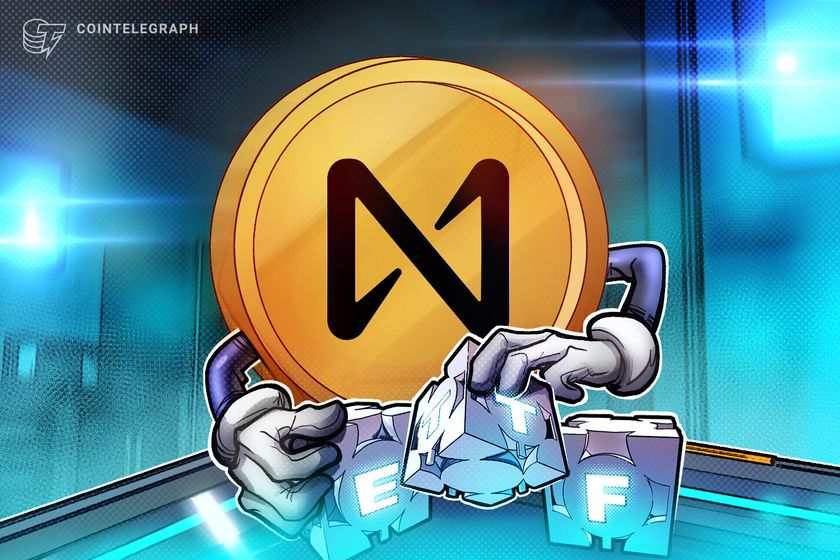
by Cointelegraph by Amin Haqshanas | 7 May 2025 | Crypto Law |
Cryptocurrency miner Diversified Energy quietly vacated a natural gas-powered crypto mining site in Elk County, Pennsylvania, reportedly leaving behind unplugged wells and regulatory violations.The site, known as Longhorn Pad A, was revived in 2022 after sitting dormant for nearly a decade when Diversified began using it to fuel on-site generators powering cryptocurrency mining computers, according to a report by the Erie Times-News.Per the report, the operation was launched without obtaining an air quality permit from the Pennsylvania Department of Environmental Protection (DEP).Though the company was later granted the permit in December 2023, a March 2025 inspection revealed that Diversified had already removed the mining infrastructure.Empty metallic sheds and missing production equipment led the DEP to issue a formal violation notice for well abandonment. Diversified reportedly denied that the site was abandoned, saying that it may resume gas production.However, the DEP and environmental advocates say the company has failed to meet its obligations. Under a 2021 agreement, Diversified had committed to plugging Longhorn A and 13 other wells at the end of their operational life, an obligation it has reportedly not fulfilled.An image of the site. Source: The Erie Times-NewsCointelegraph has reached out to Diversified for comment.Related: Bitcoin miners should pay costs in depreciating currency — Ledn execDiversified under scrutiny over business modelEnvironmentalists have long raised concerns about Diversified’s business model, which involves acquiring aging, low-producing wells and extracting remaining value without sufficient plans for decommissioning.Plugging a single well can cost over $100,000, and Pennsylvania already has over 350,000 orphaned and abandoned wells, making the stakes particularly high.A 2022 report labeled the company’s approach a “business model built to fail Appalachia,” warning that taxpayers could be left footing the bill for thousands of unplugged wells.Diversified recently agreed to plug 3,000 wells by 2034 in a separate legal settlement but continues to face regulatory scrutiny, including a probe by the US House Committee on Energy and Commerce.Horton Township officials, where the Longhorn site is located, say they’ve received no updates from the company.Local supervisor PJ Piccirillo told the Erie Times-News that generators and tanks were removed without notice. “All we know is that the property seems to have been abandoned,” he said.Related: Bitcoin mining — Institutions boost investments amid favorable US climateUS cities confront crypto miningOn April 25, the planning commission of Vilonia, Arkansas, unanimously rejected a proposal to establish a cryptocurrency mining facility within the city limits, following opposition from residents.In January, Arkansas lawmakers introduced a bill that would ban crypto mining operations within 30 miles of any US military facility in the state.The opposition to crypto miners in Arkansas follows a broader trend across US municipalities where crypto-mining initiatives have faced increasing scrutiny.In October 2024, a group of residents in Granbury, Texas, filed a lawsuit against Marathon Digital, alleging that its mining facility generated too much noise.Magazine: 12 minutes of nail-biting tension when Ethereum’s Pectra fork goes live

by Cointelegraph by Lyne Qian | 7 May 2025 | Crypto Law |
Several crypto-focused organizations — including Bitcoin (BTC) mining companies — are eyeing a US return, primarily driven by uncertain geopolitical tensions. Still, BTC miner Hive Digital Technologies is doubling down on the untapped potential of the Latin American (LATAM) market.In an exclusive interview with Cointelegraph, Hive Digital Technologies’ president and CEO, Aydin Kilic, said that Paraguay presents a compelling long-term opportunity equipped with “geopolitical stability, low-cost hydro energy, and a government open to foreign investment”.Picking up from where Bitfarms left offHive acquired Bitfarms’ 200 megawatt (MW) Yguazú facility for $56 million in January. Phase one infrastructure of a 100 MW data center at the site was completed in April, supporting five exahashes per second (EH/s) of application-specific integrated circuit (ASIC) mining.Hive plans to expand to 300 MW of mining facilities in Paraguay in 2025. It aims to increase its hashrate to 25 EH/s by September.Related: Bitfarms sells Paraguay site to Hive for $85M, refocuses on USThe CEO said Hive has spent over a year cultivating strong, cooperative relationships with local stakeholders in Paraguay. “We are investing in local hiring, training programs and strong vendor partnerships. Our goal is to create a local ecosystem of support that keeps costs stable while boosting uptime and efficiency,” he added.While there was a proposed ban on crypto mining in Paraguay due to the pressure it poses on the country’s electricity supply and potential rising electricity prices, Aydin said that their team is actively involved with policymakers to support clarity and cooperation in mining legislation.Hive embraces global diversification to hedge against geopolitical risksHive has data centers in Canada, Sweden and Paraguay. Contrasting with its ongoing LATAM expansion, the miner is relocating its headquarters to San Antonio, Texas. “Our growing presence in North and South America creates a balanced footprint resilient to geopolitical or trade policy shocks,” Kilic said.The US tariff on China raised concerns about the rising cost of mining equipment, like ASICs. Kilic told Cointelegraph that they have diversified sourcing channels for ASICs and electrical components to avoid single-region dependencies. Related: Bitcoin miners should pay costs in depreciating currency — Ledn execTo ensure scaling from six to 25 EH/s, the CEO said the company has locked in key ASIC orders, secured power access through long-term power purchase agreements, and expanded engineering capacity across three continents to deal with market and technological uncertainties.Profitability in Bitcoin mining is ultimately a physics equationKilic sees Bitcoin mining profit as a physics equation. He told Cointelegraph that capital and operational expenses depend on hashrate-sensitive analysis to seek the most accretive way to fund their business through BTC treasury and ATM sales.While the solo mining community may have more difficulty making profits, the CEO suggested the focus should be on the variables it can control: “Whether you run one rig or ten thousand, it comes down to controlling inputs like opex, power costs, and machine uptime to drive predictable outputs — maximizing energy efficiency, minimizing downtime and being disciplined with treasury management.”Magazine: Korea to lift corporate crypto ban, beware crypto mining HDs: Asia Express

by Cointelegraph by Helen Partz | 7 May 2025 | Crypto Law |
Bhutan, known for investments in cryptocurrencies like Bitcoin, has launched a tourism crypto payment system in partnership with Binance Pay and DK Bank.The system allows Bhutan travelers with Binance accounts to pay for services like tickets, hotel stays, tour guides and other products using at least 100 different crypto assets, including Bitcoin (BTC), USDC (USDC) and Binance-backed BNB (BNB).The initiative also opens a payment gateway for businesses in Bhutan, enabling them to accept crypto payments through a QR code on a phone, according to an announcement by Binance on May 7.“This is more than a payment solution — it’s a commitment to innovation, inclusion, and convenience,” Damcho Rinzin, director of Bhutan’s tourism department, said.Benefits for small businesses in remote areasThe partnership specifically targets small businesses in Bhutan, such as vendors and rural artisans who may have never had access to card terminals or payment infrastructure.“Even Bhutan’s most remote businesses can now accept crypto through a phone, gaining access to international travelers with just a QR code,” the announcement stated.Source: BinanceBinance Pay said tourists will be able to pay for services without needing local currency or cash. Related: Crypto spending will grow, but fiat isn’t going anywhere: Mercuryo CEO“No need to pack your wallet — hop on a journey of innovation and inclusion with just your Binance App,” Binance Pay said in a post on X.“World’s first national-level crypto tourism payment system”Binance Pay and Bhutan’s tourism department referred to the initiative as the “world’s first national-level crypto tourism payment system.”“Bhutan’s model is the first to offer a fully integrated, end-to-end crypto payment system at the national level,” Binance Pay’s announcement said, adding:“It also addresses previous limitations by offering real-time confirmations, near-zero fees, and a fully licensed local bank handling settlements on the ground.”Binance CEO Richard Teng emphasized that the system advances crypto payments in travel and “sets a precedent for how technology can bridge cultures and economies.”Source: Bhutan’s tourism department“This initiative exemplifies our commitment to innovation and our belief in a future where digital finance empowers global connectivity and enriches travel experiences,” Teng added.Bhutan holds multiple crypto assetsBhutan’s launch of the payments system aligns with its broader embrace of digital assets.The country has been working to set up a strategic crypto reserve as part of a new economic hub, while the government has been reportedly mining and investing in Bitcoin since at least 2019.According to Arkham, Bhutan’s commercial arm, Druk Holding and Investments (DHI), has added 374 Bitcoin to its stash since early January, increasing holdings to 12,062 BTC. Additionally, the entity holds modest amounts on chains like Polygon, BNB Chain and Base.Crypto holdings of the Royal Government of Bhutan (DHI). Source: ArkhamWhile Bhutan has been increasingly friendly to crypto adoption in recent months, regulating cryptocurrencies like Bitcoin remains a legal gray area.In 2020, Bhutan’s central bank, the Royal Monetary Authority (RMA), issued a warning against the Pi cryptocurrency, urging the public to exercise caution when investing in any crypto asset.“The RMA would like to remind the general public to exercise due caution in making any investment in Pi or any other cryptocurrency as the implications, risks and use cases on the economy and financial systems are still to be ascertained,” the authority wrote.Magazine: Bitcoin to $1M ‘by 2029,’ CIA tips its hat to Bitcoin: Hodler’s Digest, April 27 – May 3

by Cointelegraph by Brayden Lindrea | 7 May 2025 | Crypto Law |
South Korea’s Democratic Party leader Lee Jae-myung has reportedly become the latest presidential candidate to promise the approval of spot crypto exchange-traded funds (ETFs) and other crypto-friendly measures, should he be elected.Lee announced his crypto promises on May 6 as part of a broader initiative to provide more investment opportunities for Korea’s youth, one of the main target demographics for the fast-approaching June 3 election.“I will create a safe investment environment so that young people can [build] assets and plan for the future,” The Korea Economic Daily (KED) quoted Lee as saying in Korean.He also promised the legalization of spot crypto ETFs, lower transaction fees, and more consumer protection measures.Lee’s Democratic Party of Korea is the favorite to win the presidential election with 42% support, according to a survey conducted by Korea’s National Barometer Survey between April 24 and 30. Korea’s acting president, Han Duck-soo, came in second at 13%.This is the first time Lee has mentioned crypto as part of his presidential campaign, KED noted. The Democratic Party made similar promises in its 2024 general election campaign, including passing spot crypto ETF legalization. However, progress stalled, KED said.South Korea’s People Power Party makes similar promisesSouth Korea’s ruling party, the People Power Party, also reportedly made crypto policy promises in late April, which included allowing spot crypto ETFs, dismantling Korea’s controversial one-exchange-one-bank rule, and establishing a regulatory framework for stablecoins.Source: CointelegraphThe one-exchange-one-bank rule in South Korea is a regulation that limits each crypto exchange to working with only one local bank. It is intended to prevent money laundering and strengthen transparency by ensuring that the identities of crypto investors can be verified when trading crypto.South Korean industry officials estimate that 16 million or 31% of the country’s 51.7 million people have access to a crypto account.Related: North Korean spy slips up, reveals ties in fake job interviewKim Moon-soo is running as the People Power Party’s candidate — a party previously led by Yoon Suk Yeol, who was impeached after he declared martial law in December.The controversial measure triggered a considerable fall in Bitcoin (BTC), Ether (ETH), and other cryptocurrencies. However, most coins recovered when the martial law was lifted around six hours later.Korea’s Constitutional Court upheld the impeachment of Yoon in a unanimous 8–0 decision decision on April 4, effectively removing him from office.Magazine: Crypto wanted to overthrow banks, now it’s becoming them in stablecoin fight

by Cointelegraph by Stephen Katte | 7 May 2025 | Crypto Law |
US Democrat lawmakers have launched a multi-angle attack on President Donald Trump’s crypto ventures with two bills and a subcommittee inquiry aimed at cutting his ability to profit from the initiatives. The Modern Emoluments and Malfeasance Enforcement Act, or the MEME Act, aims to prevent federal officials from using their position to profit from memecoins, Democrat Senator Chris Murphy said in a May 6 statement. If passed, the MEME Act prohibits the president, vice president, members of Congress, senior executive branch officials, their spouses and children from issuing, sponsoring, or promoting a security, future, commodity, or digital asset, according to the bill’s description. Today I’m introducing a bill – the MEME Act – to ban a President or Member of Congress from issuing a meme coin. The Trump Coin is the biggest corruption scandal in the history of the White House. @RepLiccardo and I are determined to put an end to this corruption – for good. pic.twitter.com/nQL9ZfIYYV— Chris Murphy 🟧 (@ChrisMurphyCT) May 6, 2025Violators could face civil penalties of up to $250,000 and be required to fork over any profits to the US Treasury. Criminal penalties could also apply, including fines and up to five years behind bars. US Representative Sam Liccardo, another Democrat, introduced companion legislation in the House of Representatives. However, Trump’s party, the Republicans, controls both chambers, and the legislation will need Republican support. Meanwhile, Democratic Senator Richard Blumenthal, a ranking member of the Permanent Subcommittee on Investigations (PSI), said in a May 6 statement that the committee is opening a preliminary inquiry into the Official Trump (TRUMP) token, Trump-backed platform World Liberty Financial (WLFI), and other associated business ventures. As part of the inquiry, the PSI sent letters to the company behind the Trump coin, Fight Fight Fight, and WLFI, asking for records and communications between the companies and the Trump organization. With his cryptocurrency schemes, Trump is putting a for sale sign in front of the White House. That’s why, as Ranking Member of the Permanent Subcommittee on Investigations, I’m launching an inquiry into this brazen corruption whose scope & scale is staggering. pic.twitter.com/3SiaCrthN8— Richard Blumenthal (@SenBlumenthal) May 6, 2025At the same time, Blumenthal says the subcommittee is asking for answers about what steps the firms have taken to address possible conflicts of interest.Main points of interest flagged by the PSI include fees the president is making on the TRUMP token and the nearly 50% spike in value from $9.40 to $13.65 after the TRUMP coin website announced on April 23 that the top 220 holders of the token would be invited to a gala dinner at the White House. Soon after launch on Jan. 18, the Trump coin hit its all-time high of $73.43, according to CoinGecko. However, it has since lost 85% of its value and is trading for $11.13. More than half of TRUMP holders in profitRoughly two million wallets have bought TRUMP, with an extra 54,000 adding the token to their stash after the dinner announcement, according to data shared with Cointelegraph from blockchain analysis firm Chainalysis. Around 764,000 of these, most with small holdings, lost money on the coin, while the 58 investors in the token have made profits of over $10 million each, totaling an estimated $1.1 billion. At the same time, Chainalysis says the memecoin creator has made $320 million so far, with an extra $1.3 million coming in since the White House dinner announcement. Related: Dem lawmakers object to hearing, citing ‘Trump’s crypto corruption’Meanwhile, a trucking logistics firm announced plans on April 30 to build a TRUMP coin treasury through a $20 million convertible note issuance. Javier Selgas, CEO of Freight Technologies, said the tokens are an “excellent way to diversify our crypto treasury and also an effective way to advocate for fair, balanced, and free trade between Mexico and the US.”The firm also acquired $5.2 million of the Fetch.ai network’s utility token FET on April 1. Magazine: Mystery celeb memecoin scam factory, HK firm dumps Bitcoin: Asia Express

by Cointelegraph by Brayden Lindrea | 7 May 2025 | Crypto Law |
Digital asset manager Bitwise has filed to list a spot Near exchange-traded fund with the US Securities and Exchange Commission, adding to a growing list of altcoins currently vying to win regulatory approval.The Bitwise Near (NEAR) ETF will track the price movements of the NEAR token, minus expenses, through a traditional brokerage, Bitwise’s May 6 registration statement shows.Bitwise named Coinbase Custody as the proposed custodian of the Bitwise NEAR ETF. The management fee, ticker and stock exchange it seeks to list on weren’t named yet. Source: CointelegraphBitwise must also file a 19b-4 filing with the SEC to kickstart the regulator’s approval process for the fund. The crypto native asset manager indicated it would make such a filing when it registered a trust linked to the NEAR ETF in Delaware on April 28.NEAR joins a pile of spot crypto ETFs on the SEC’s deskThe SEC now has at least a dozen spot crypto ETFs to review in 2025, including applications for Litecoin (LTC), Dogecoin (DOGE), Solana (SOL), XRP (XRP), Cardano (ADA), Hedera (HBAR), Polkadot (DOT), Chainlink (LINK), Avalanche (AVAX), Aptos (APT) and Sui (SUI).Bitwise already has applications out for a spot DOGE, SOL, and XRP ETFs, and also has an approved spot Bitcoin (BTC) and Ether (ETH) ETF, which are listed on the NYSE Arca and have attracted a combined $2.35 billion in net inflows since launching last year.NEAR — the token powering the layer-1 Near blockchain — is the 44th largest cryptocurrency by market cap at $2.73 billion, CoinGecko data shows.The Near blockchain was once touted as an Ethereum killer and is considered by its proponents as a solution to the “blockchain trilemma” — the challenge of achieving all three critical aspects of blockchain performance: security, scalability and decentralization.Related: Ethereum’s era of crypto dominance is over — LONGITUDE panelThrough Nightshade sharding, Near can process up to 100,000 transactions per second and is secured by 265 active validators, Nearblocks.io data shows.Source: Justin BonsThe Near ecosystem shifted from decentralized finance to AI infrastructure in 2024, unveiling plans to build the world’s largest open-source large language model.Magazine: 12 minutes of nail-biting tension when Ethereum’s Pectra fork goes live






